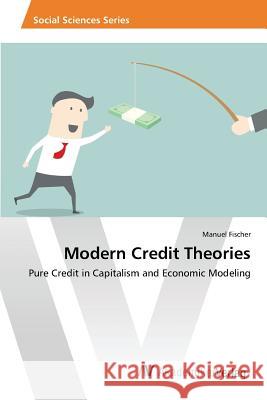Modern Credit Theories » książka
Modern Credit Theories
ISBN-13: 9783639865967 / Angielski / Miękka / 2015 / 128 str.
By means of a study of current credit theories and Joseph Schumpeter's original writings, this essay is inquiring into the roots of pure credit theories in regard to model-theoretical and methodological properties. Three recent methodological approaches are analyzed: firstly, endogenous growth theory concentrates on Schumpeter's "creative destruction" process by which entrepreneurs introduce innovation into the economy. Secondly, stock-flow consistent modeling ensures that all purchasing power created through credit is rigorously accounted for until its destruction via debt repayment. Thirdly, agent-based modeling provides rigorous micro-foundation and allows for heterogeneity of economic agents. These three approaches together point to the fruitful rediscovery of Schumpeter's claim that capitalism has to be understood as the specific development process whereby ad-hoc and ex-nihilio created credit facilitates innovation. Once that fact is accepted, quite naturally the focus of growth and monetary economics switches to the analysis of the institution of credit.
By means of a study of current credit theories and Joseph Schumpeters original writings, this essay is inquiring into the roots of pure credit theories in regard to model-theoretical and methodological properties. Three recent methodological approaches are analyzed: firstly, endogenous growth theory concentrates on Schumpeters "creative destruction" process by which entrepreneurs introduce innovation into the economy. Secondly, stock-flow consistent modeling ensures that all purchasing power created through credit is rigorously accounted for until its destruction via debt repayment. Thirdly, agent-based modeling provides rigorous micro-foundation and allows for heterogeneity of economic agents. These three approaches together point to the fruitful rediscovery of Schumpeters claim that capitalism has to be understood as the specific development process whereby ad-hoc and ex-nihilio created credit facilitates innovation. Once that fact is accepted, quite naturally the focus of growth and monetary economics switches to the analysis of the institution of credit.











